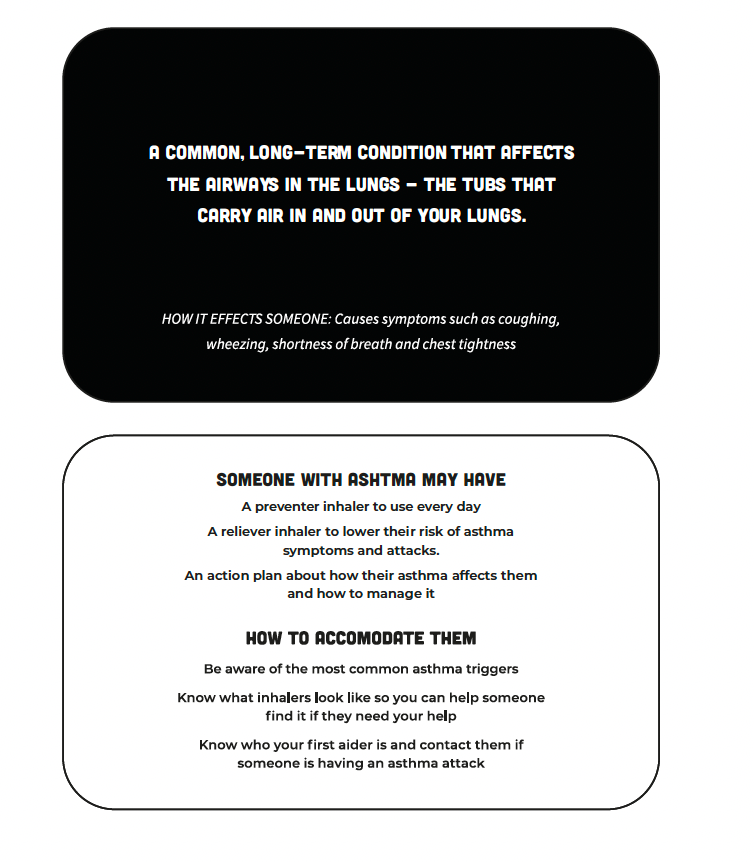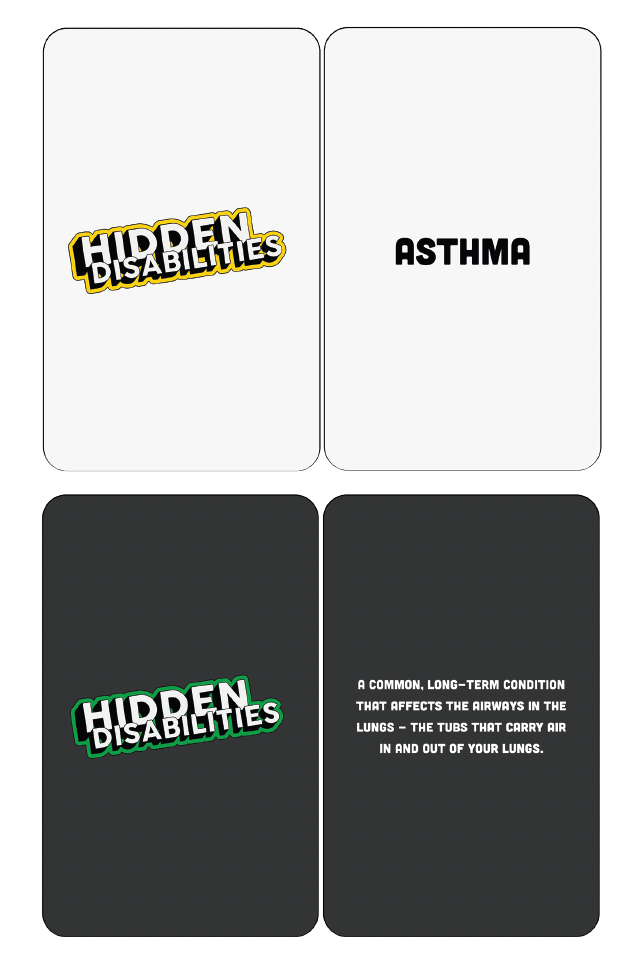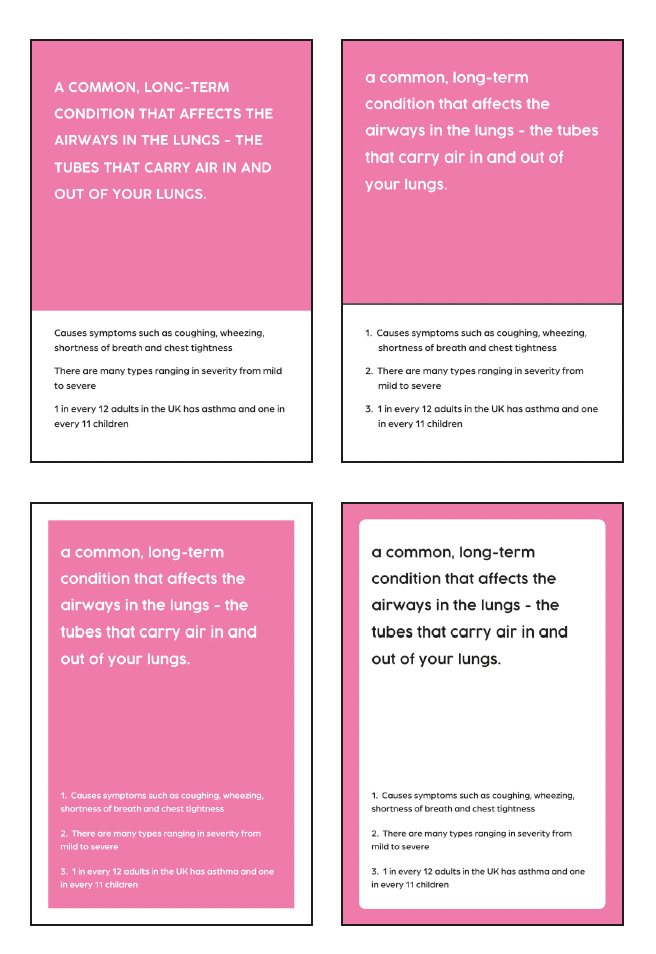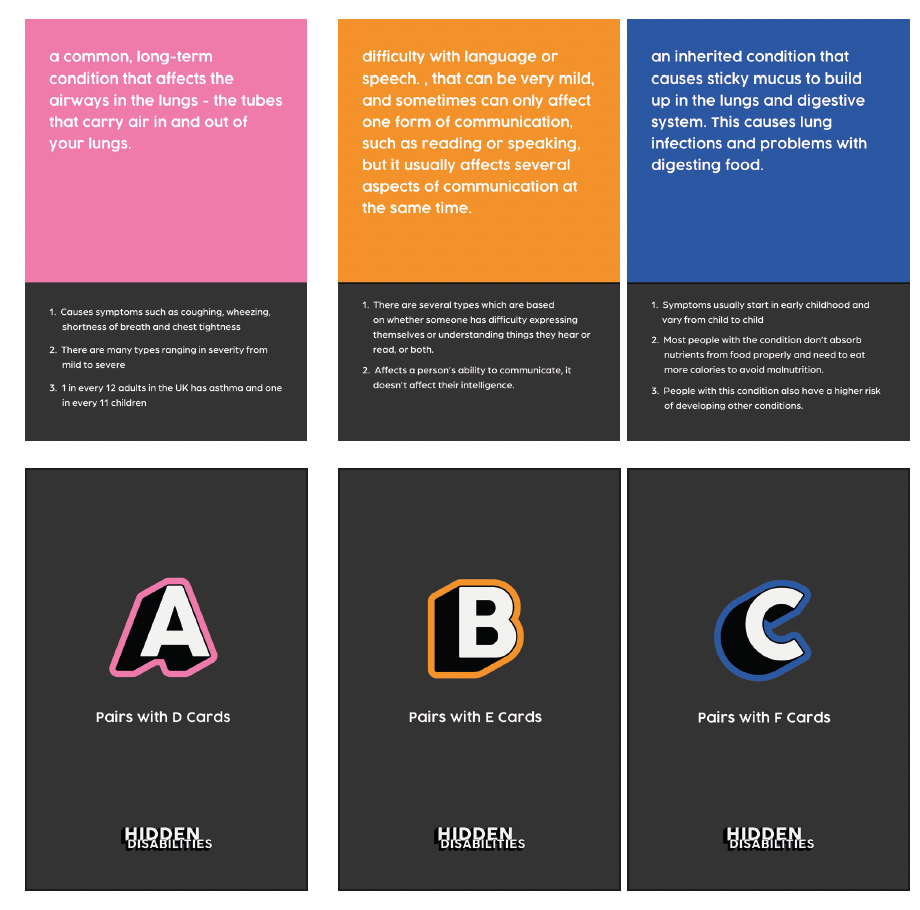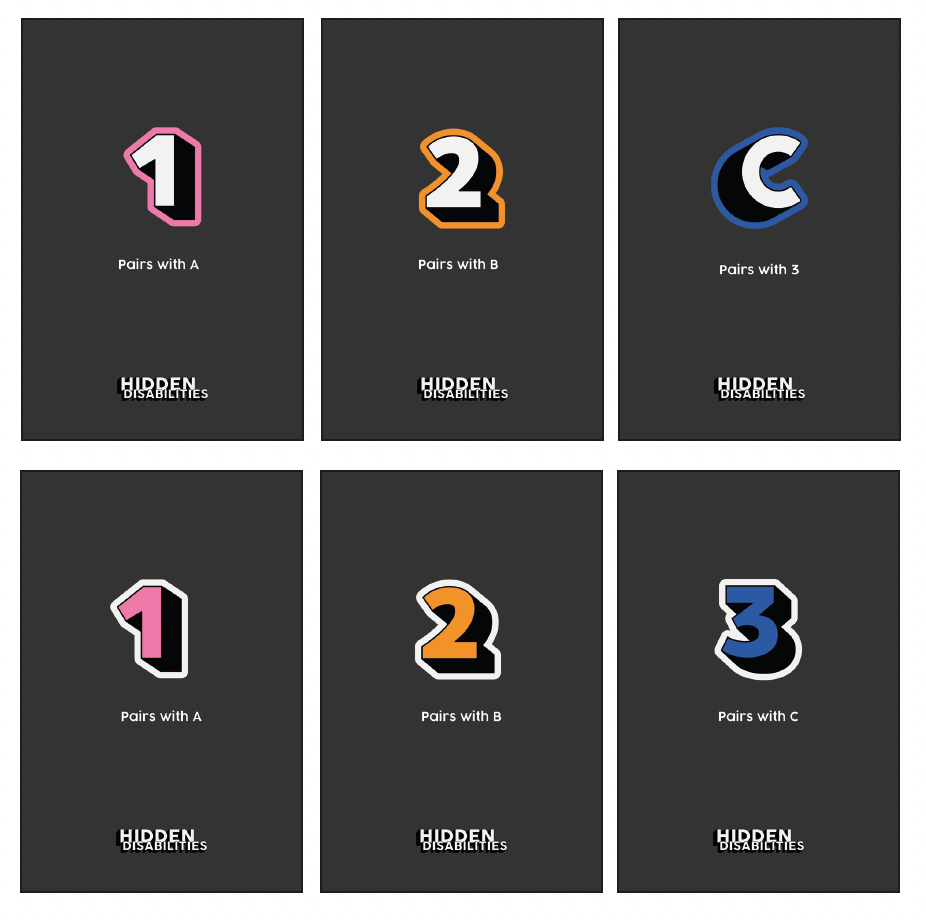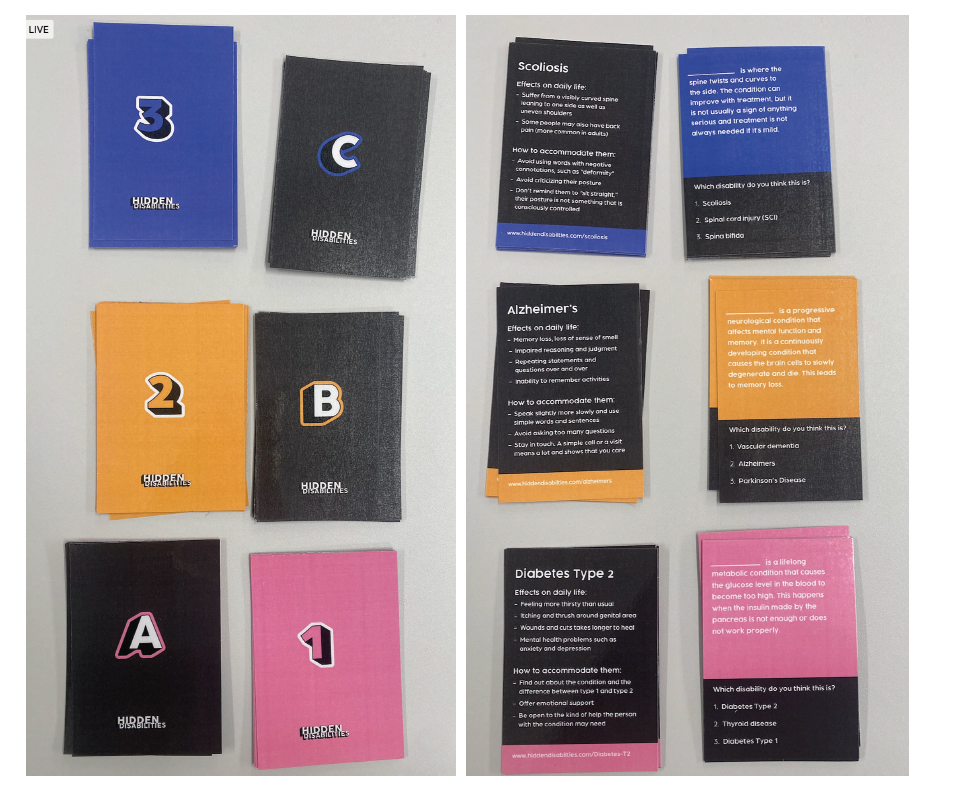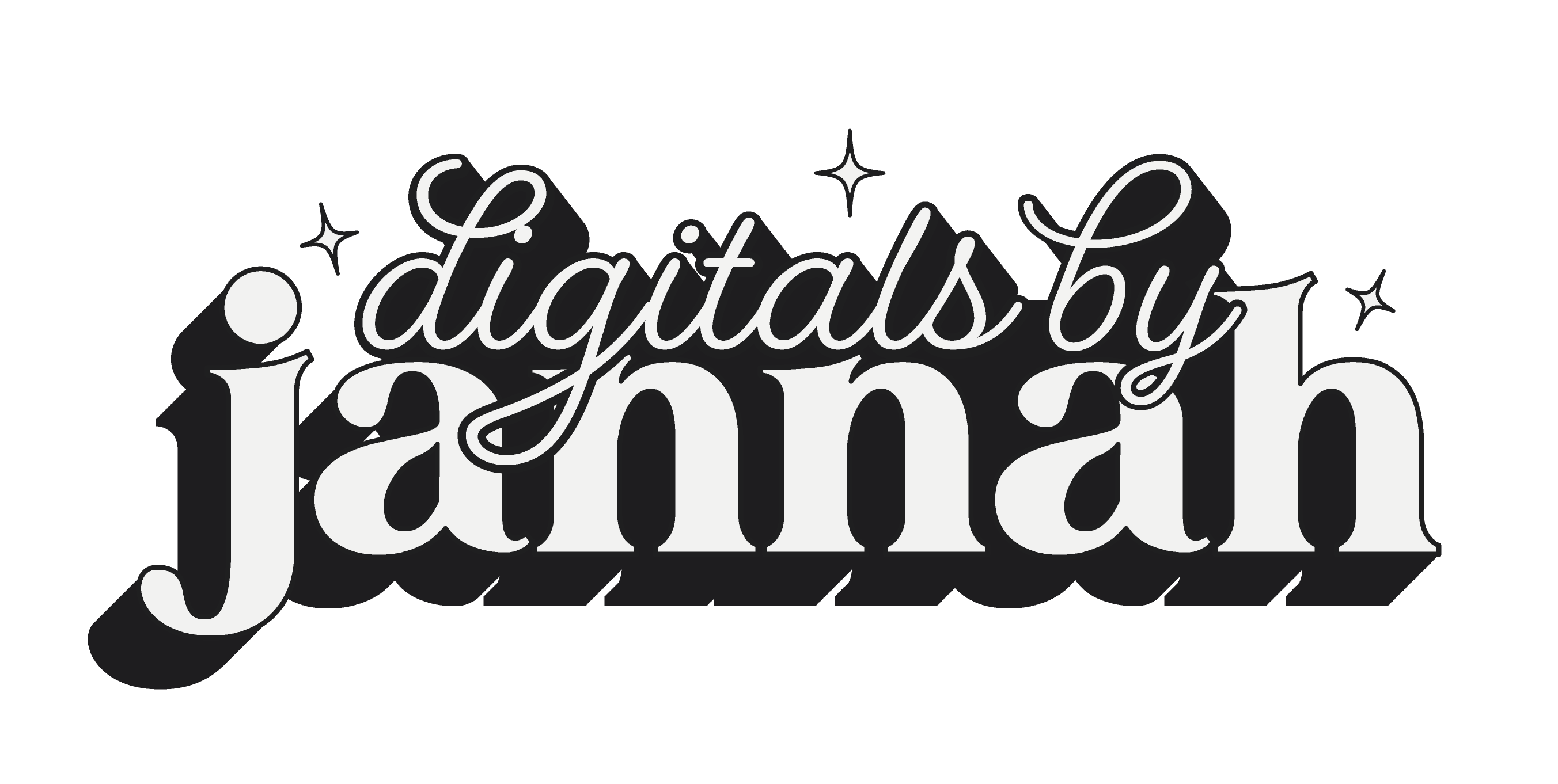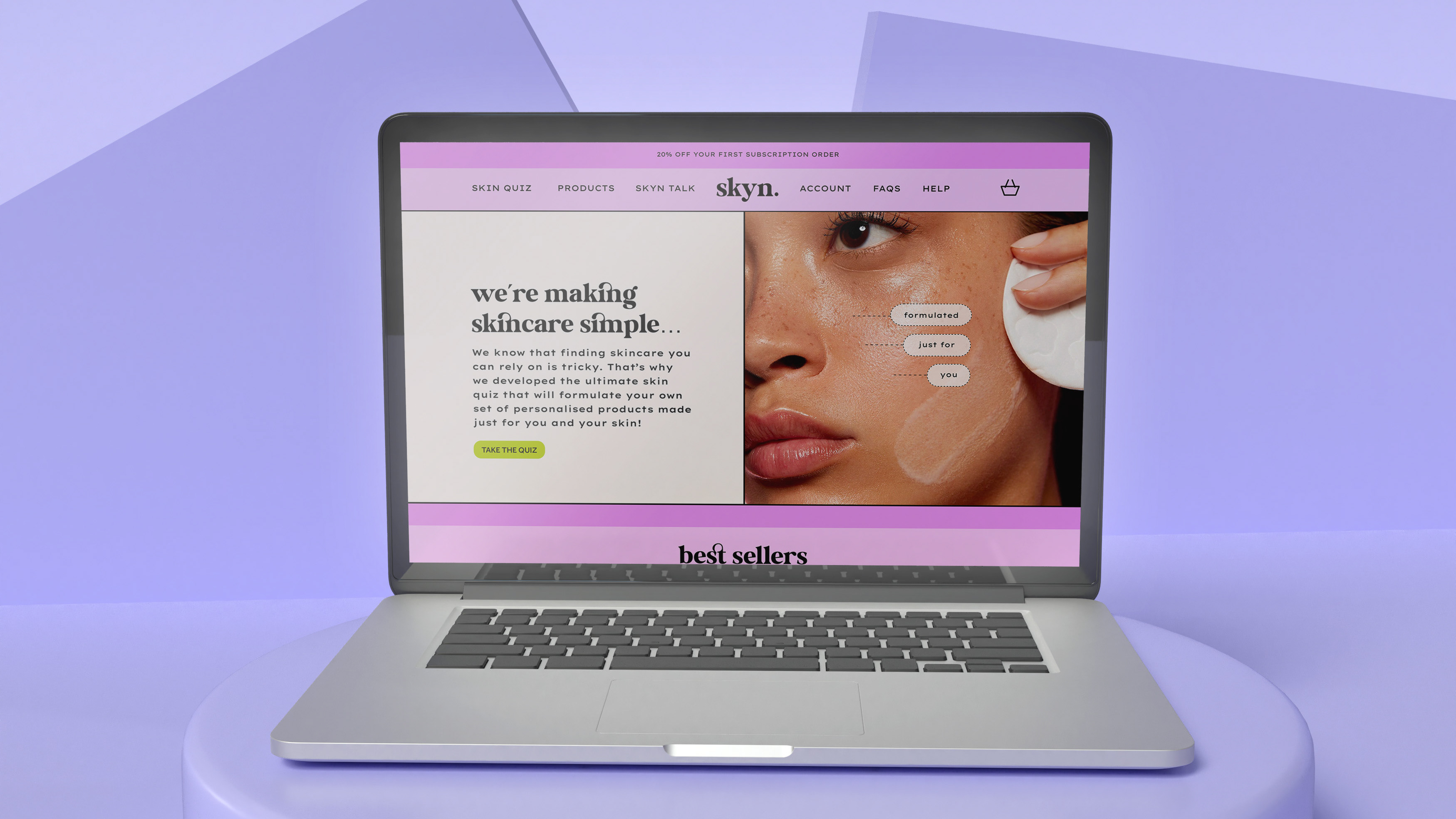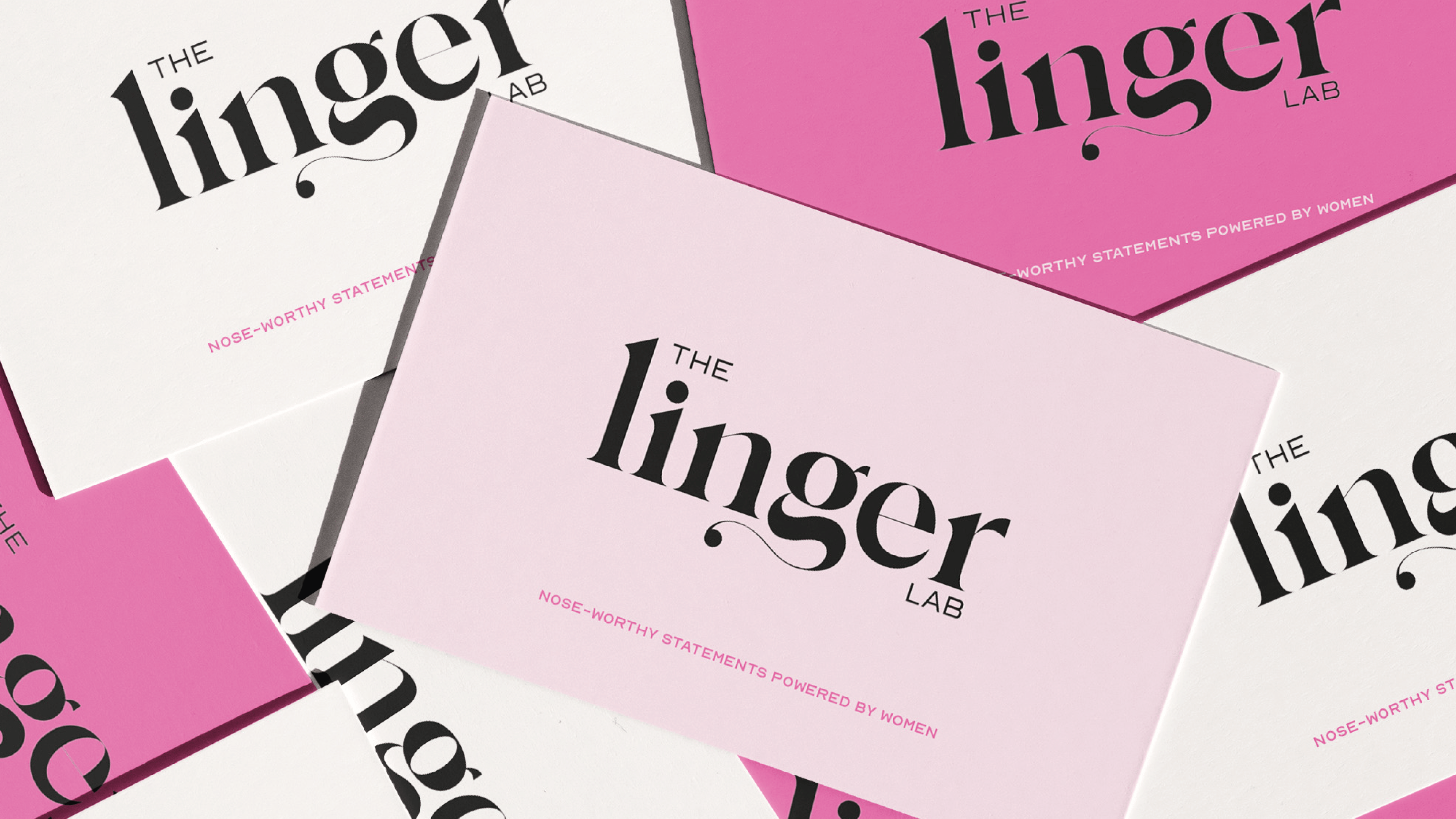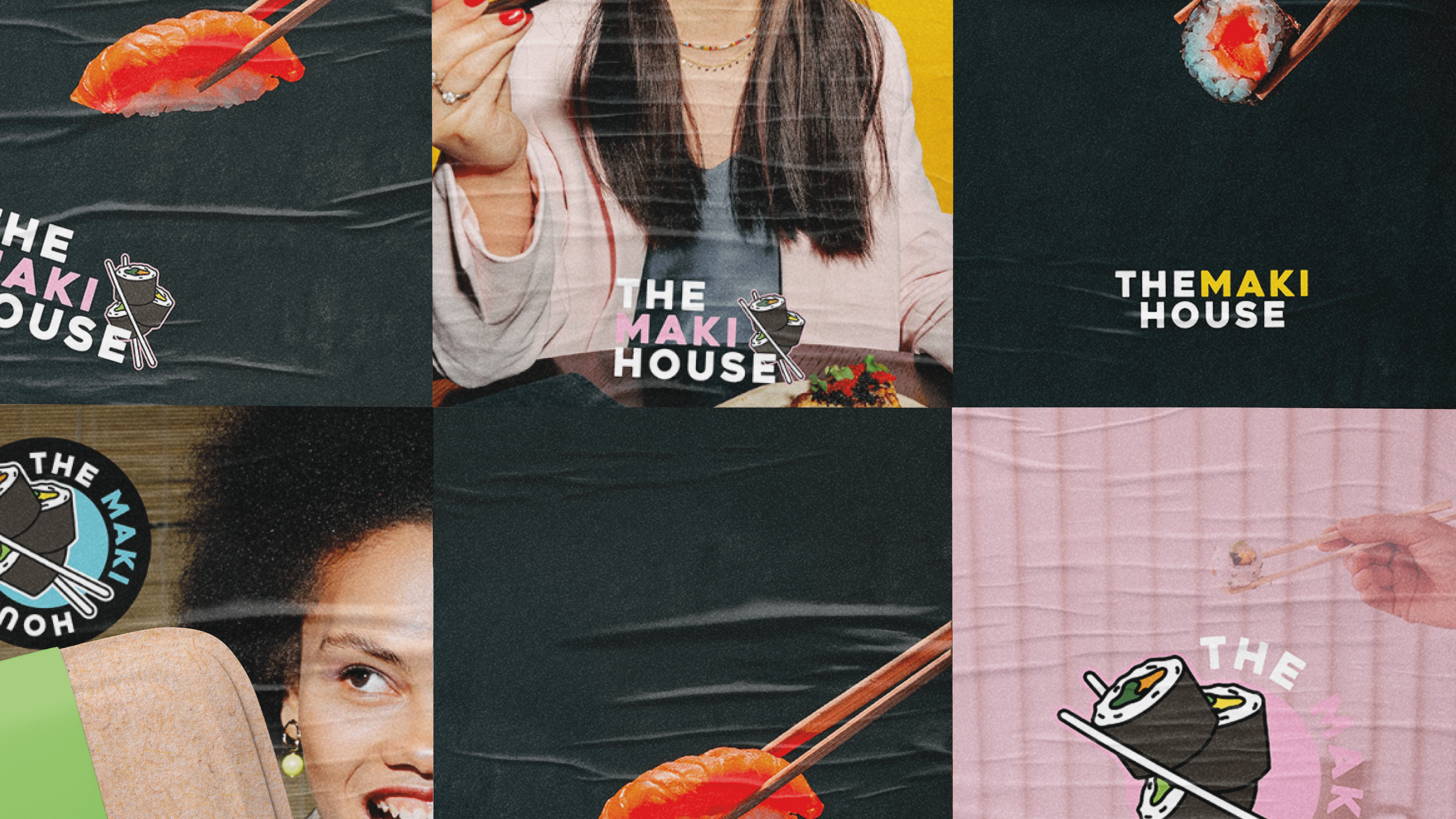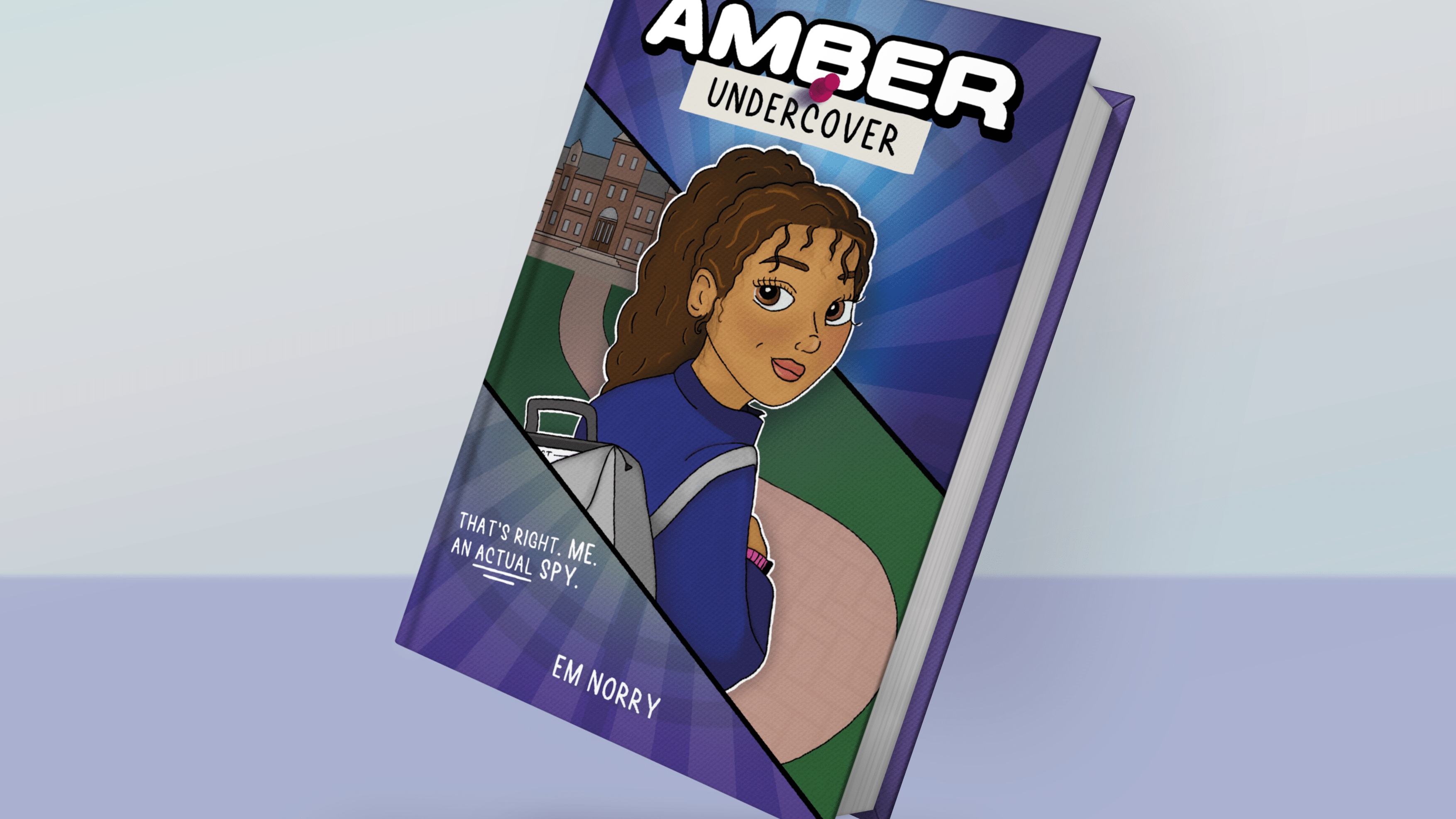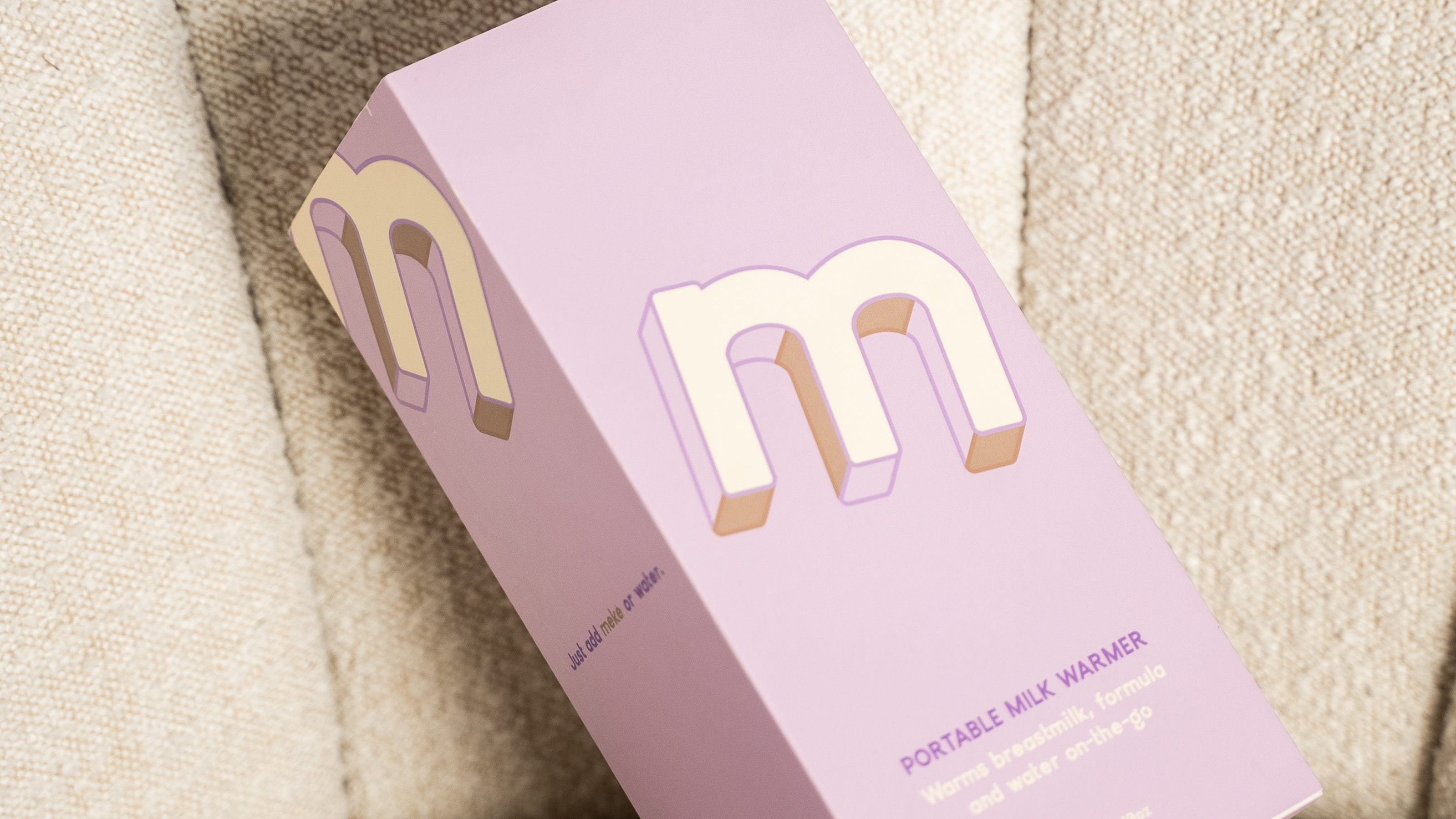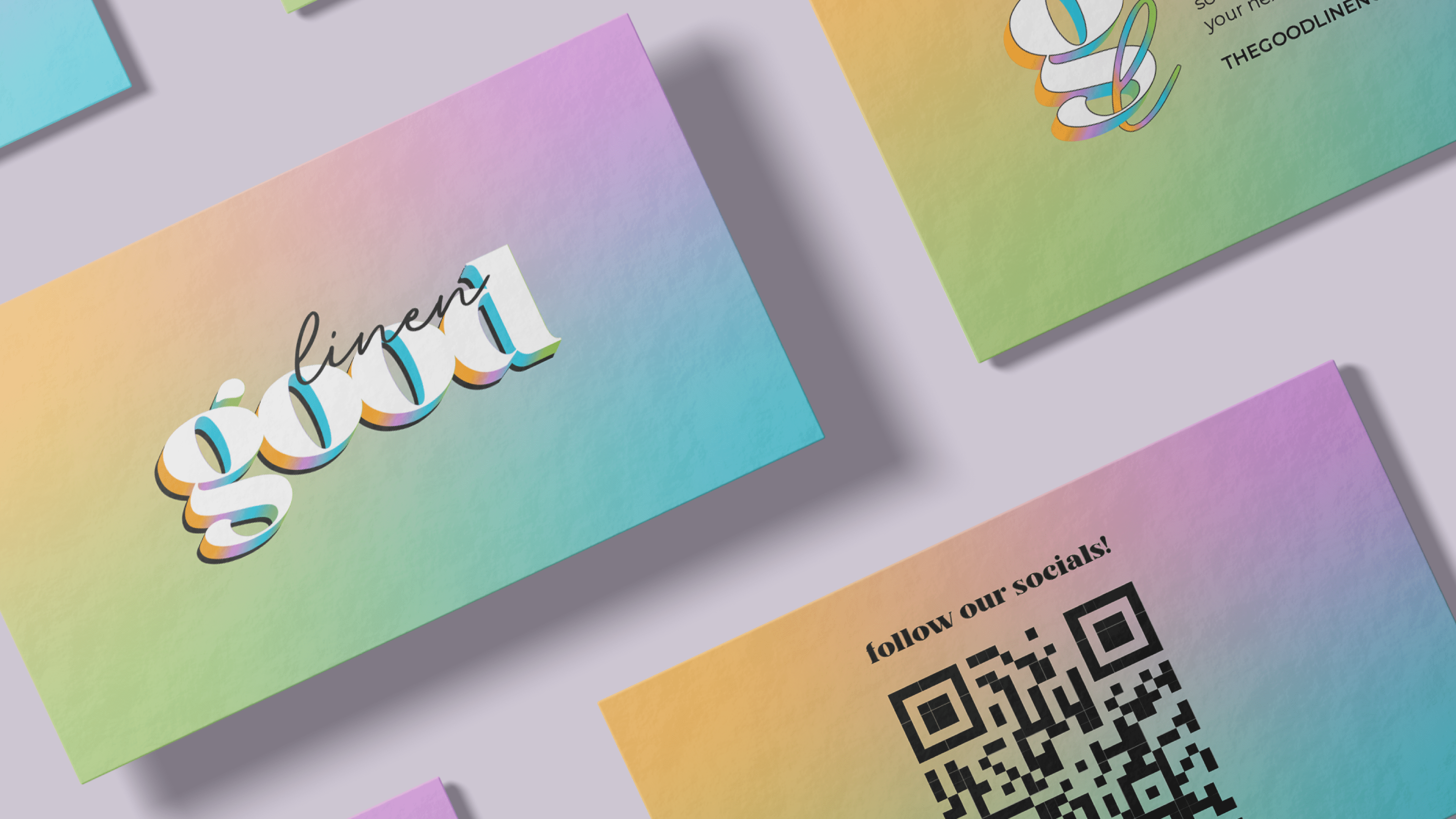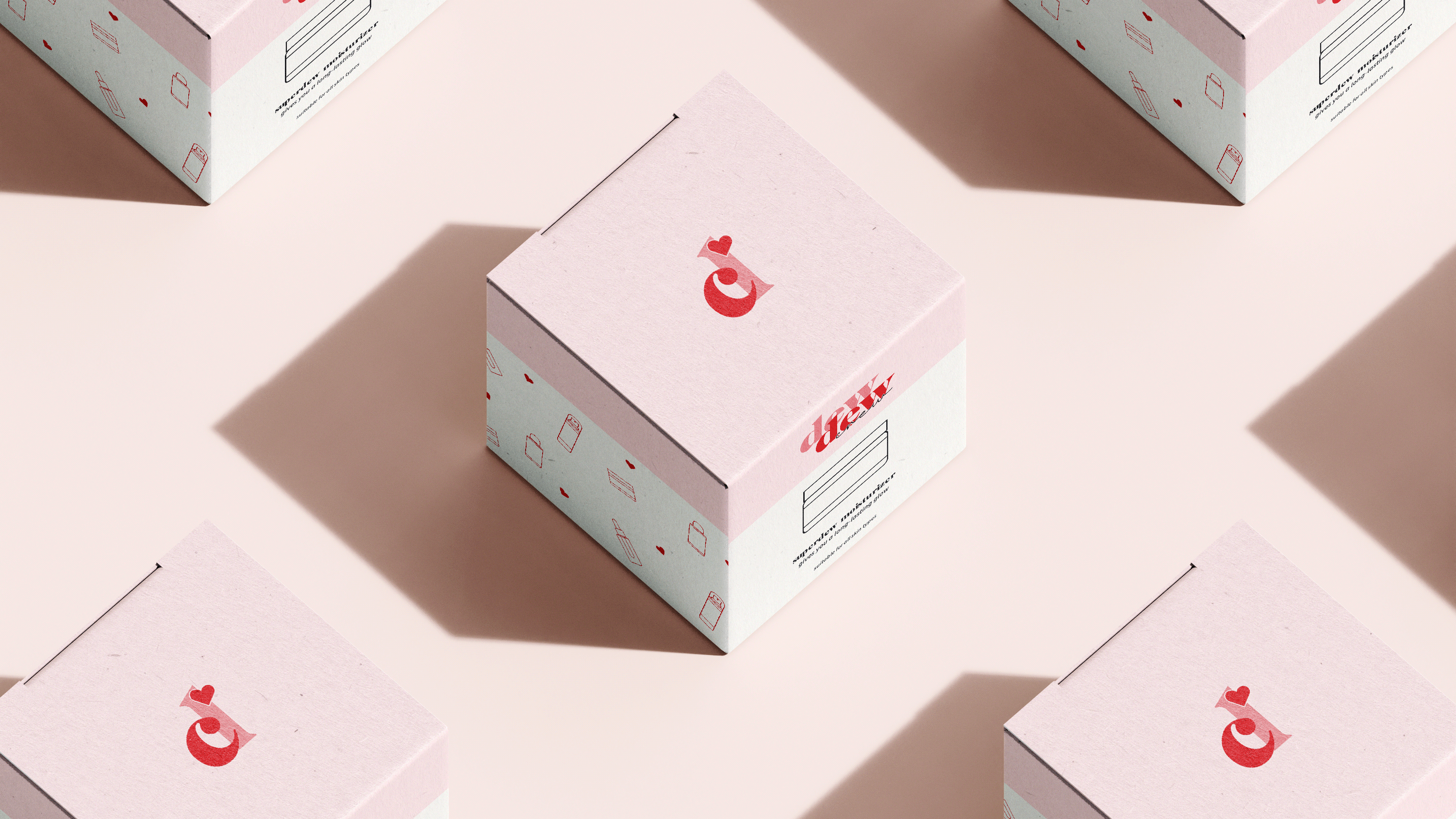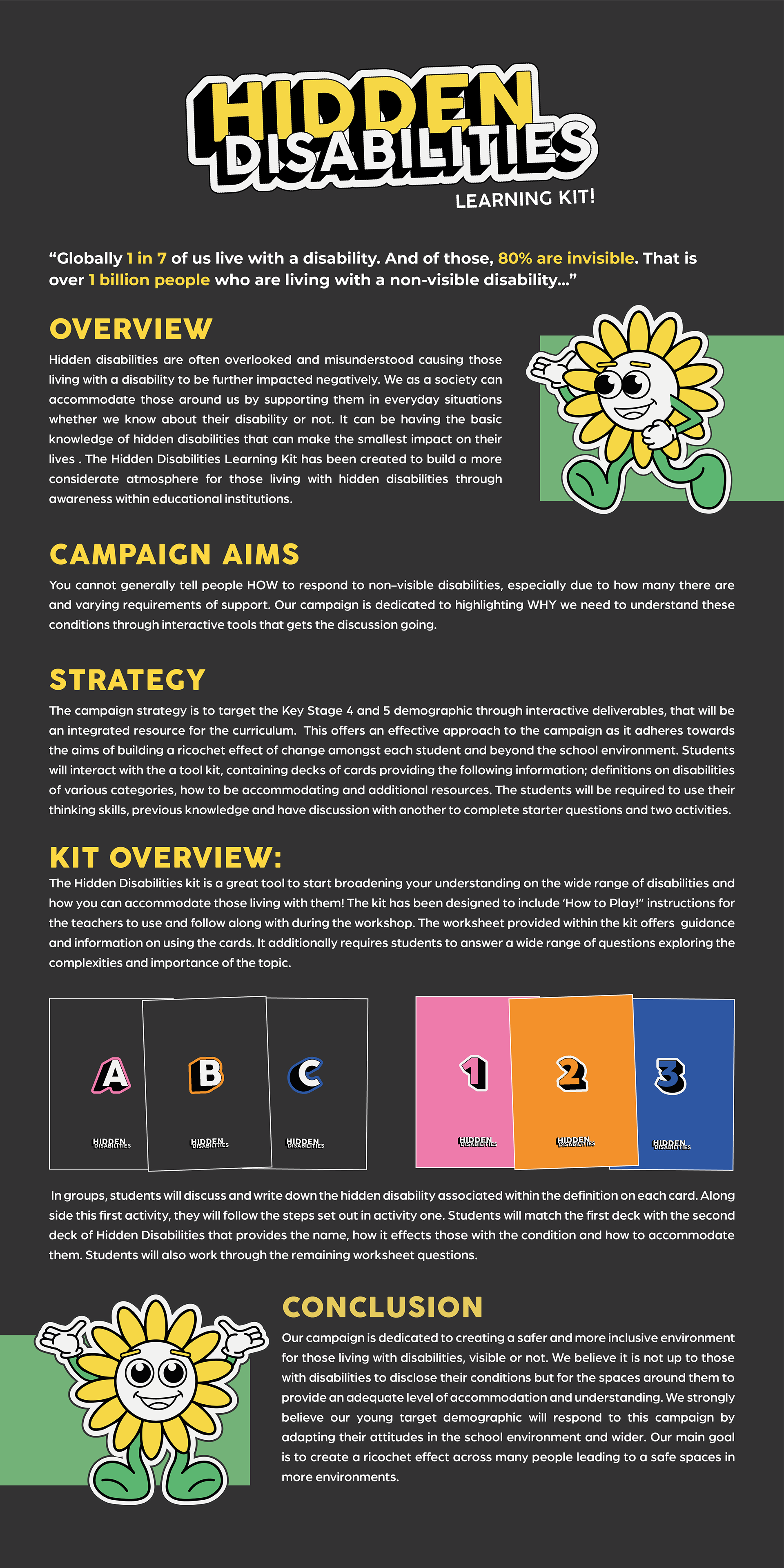
HIDDEN DISABILITIES LEARNING KIT
Box Design
Hidden Disabilities Learning Kit (Mock Up)
Hidden Disabilities Learning Kit - Top (Mock Up)
Hidden Disabilities Learning Kit - Bottom (Mock Up)
I am interested in the topic of Hidden Disabilities because I believe it is a subject without enough awareness despite it affecting millions of people on the first and second hand. I am addressing the particular problem of society not understanding that although an individual may look like the man-made standardised version of “normal” they could have a condition affecting their ability to live and perform tasks ‘normally”. I would like my information design approach to the topic to highlight the importance of being considerate to others around you due to hidden disabilities which can be experienced at work, educational institutions, with friends, family, hobbies, extra curricular activities etc.
The campaign strategy is to target the Key Stage 4 and 5 demographic through interactive deliverables, that will be an integrated resource for the curriculum. This offers an effective approach to the campaign as it adheres towards the aims of building a ricochet effect of change amongst each student and beyond the school environment. Students will interact with the a tool kit, containing decks of cards providing the following information; definitions on disabilities of various categories, how to be accommodating and additional resources. The students will be required to use their thinking skills, previous knowledge and have discussion with another to complete starter questions and two activities. The structure of this strategy is to provide students with detailed information on Hidden Disabilities before they leave the school environment. So, whether they decide to go to University, College or do an Apprenticeship for example, they can apply their knowledge to their new setting. This preparation should naturally have an effect on these environments and create a safer, understanding place for those with hidden disabilities - without having to disclose it to their peers.
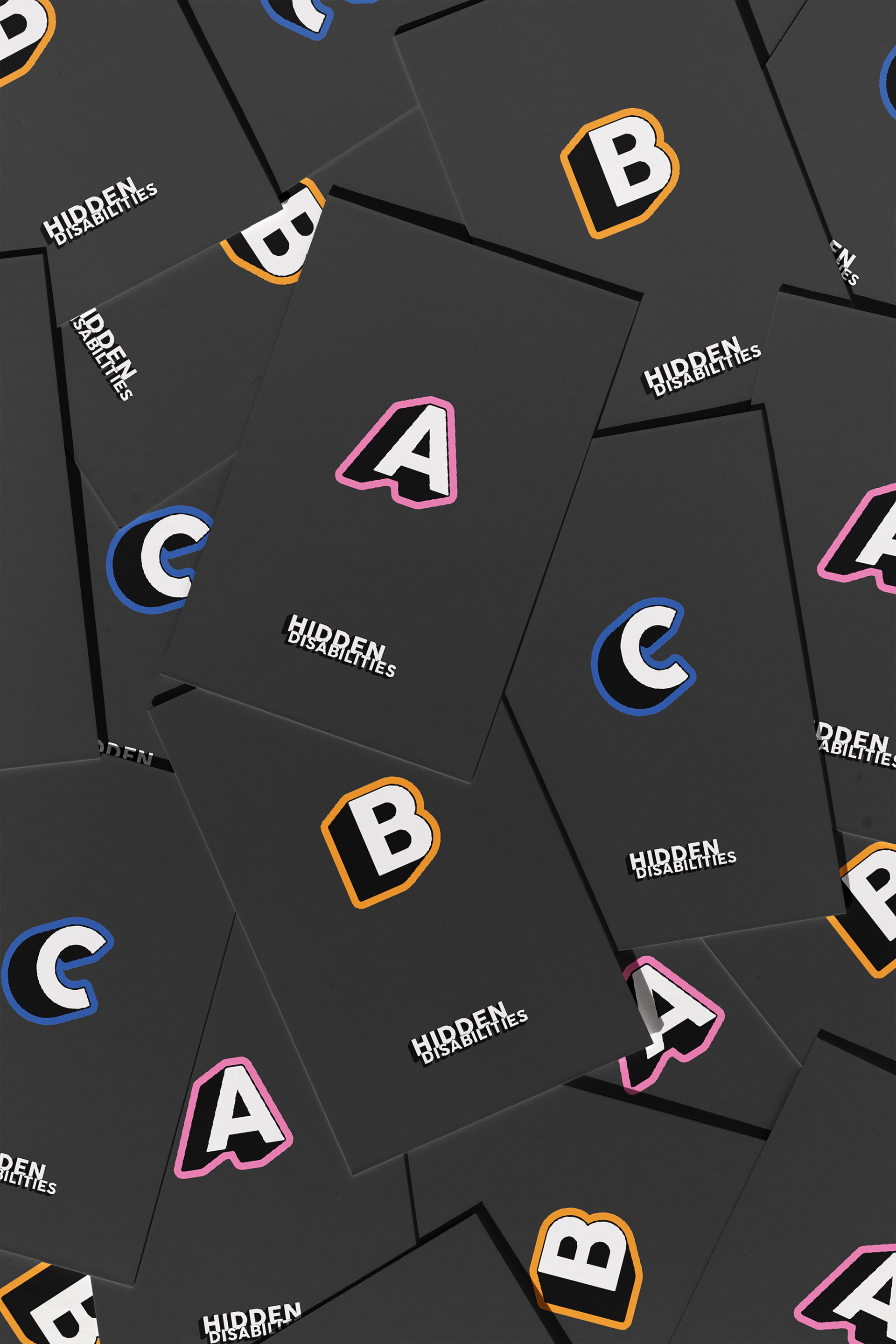
Cards A,B and C - Defining a Disability
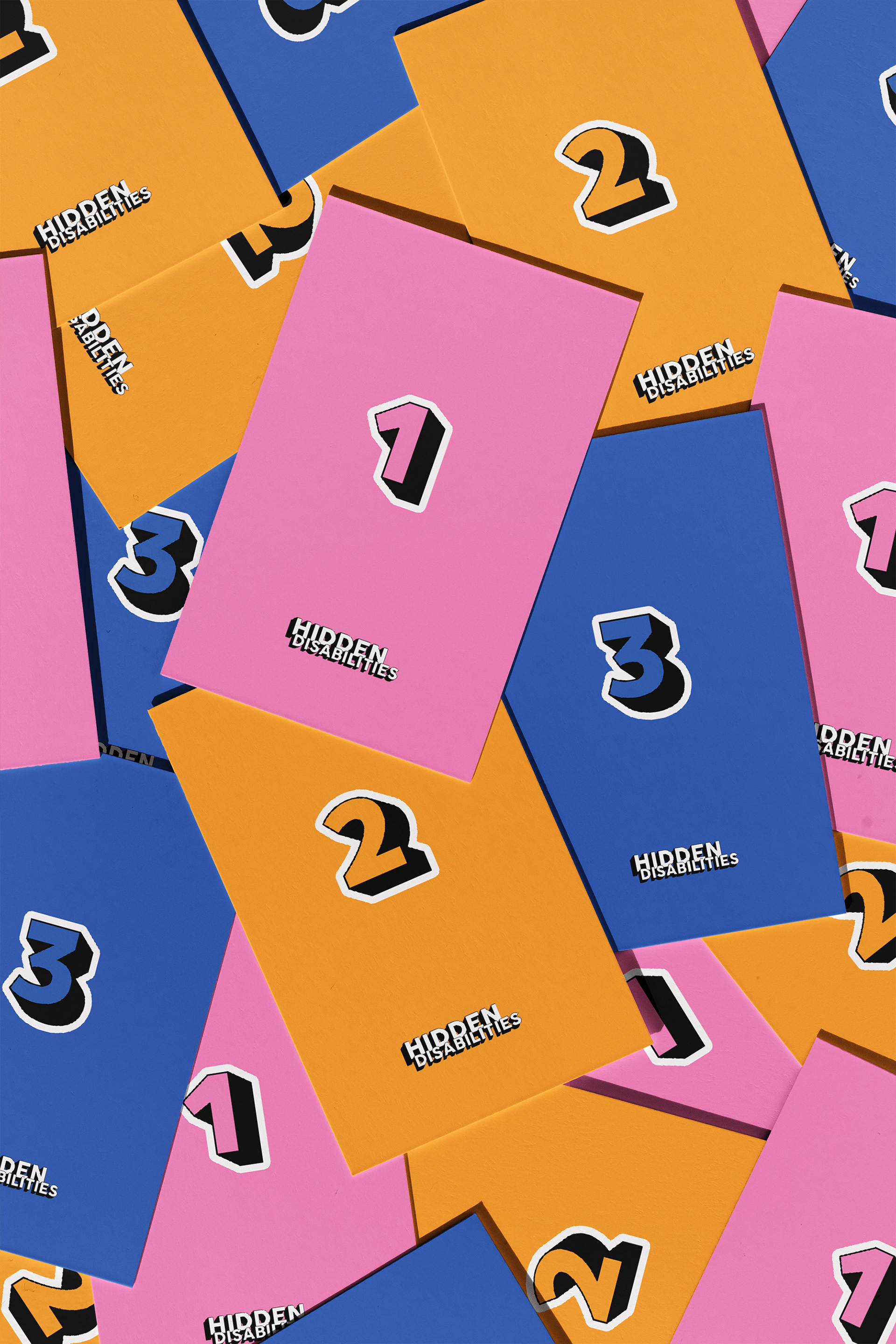
Cards 1, 2 and 3 - Disability Answers
The name of each disability on the first deck of cards has been left blank and hidden. Students are required to use the options and discuss the answer amongst themselves. Due to the wide variety of hidden disabilities, the cards have been organised based on three colours to highlight the type of disability. Hidden Disabilities include:
+ Autism and ADHD
+ Cognitive impairments
+ Mental health conditions and speech
+ Visual impairments or hearing loss
+ Respiratory and chronic conditions
Pink: Respiratory and Chronic / Orange: Cognitive and Mental Health / Blue: Physical
The first deck the students interact with requires them to come up with ways of being accommodating for each disability shown on their card. Once matched up by the student, the second deck provides the definitions, ways the disability affects someone’s daily life and how to accommodate them.
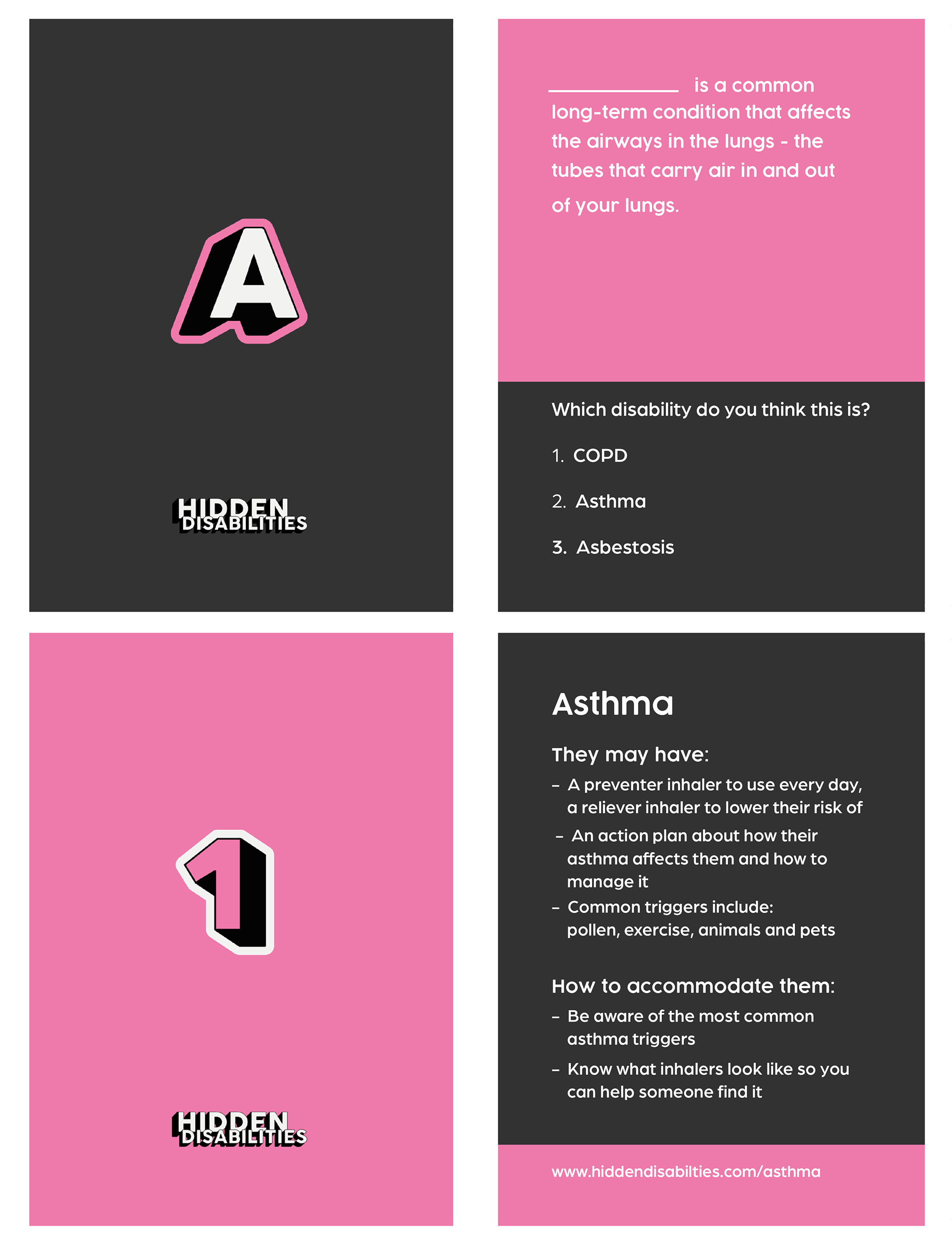
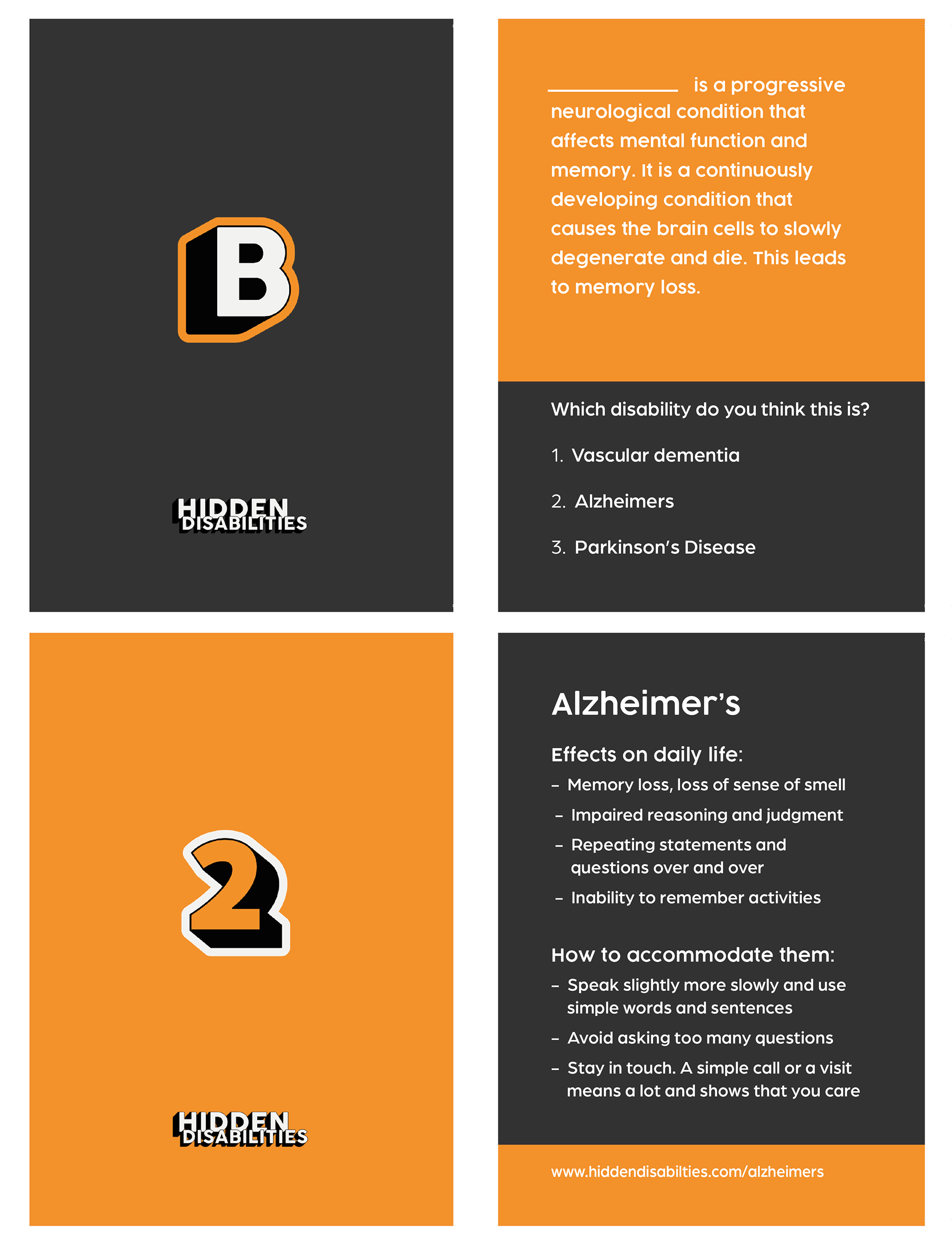
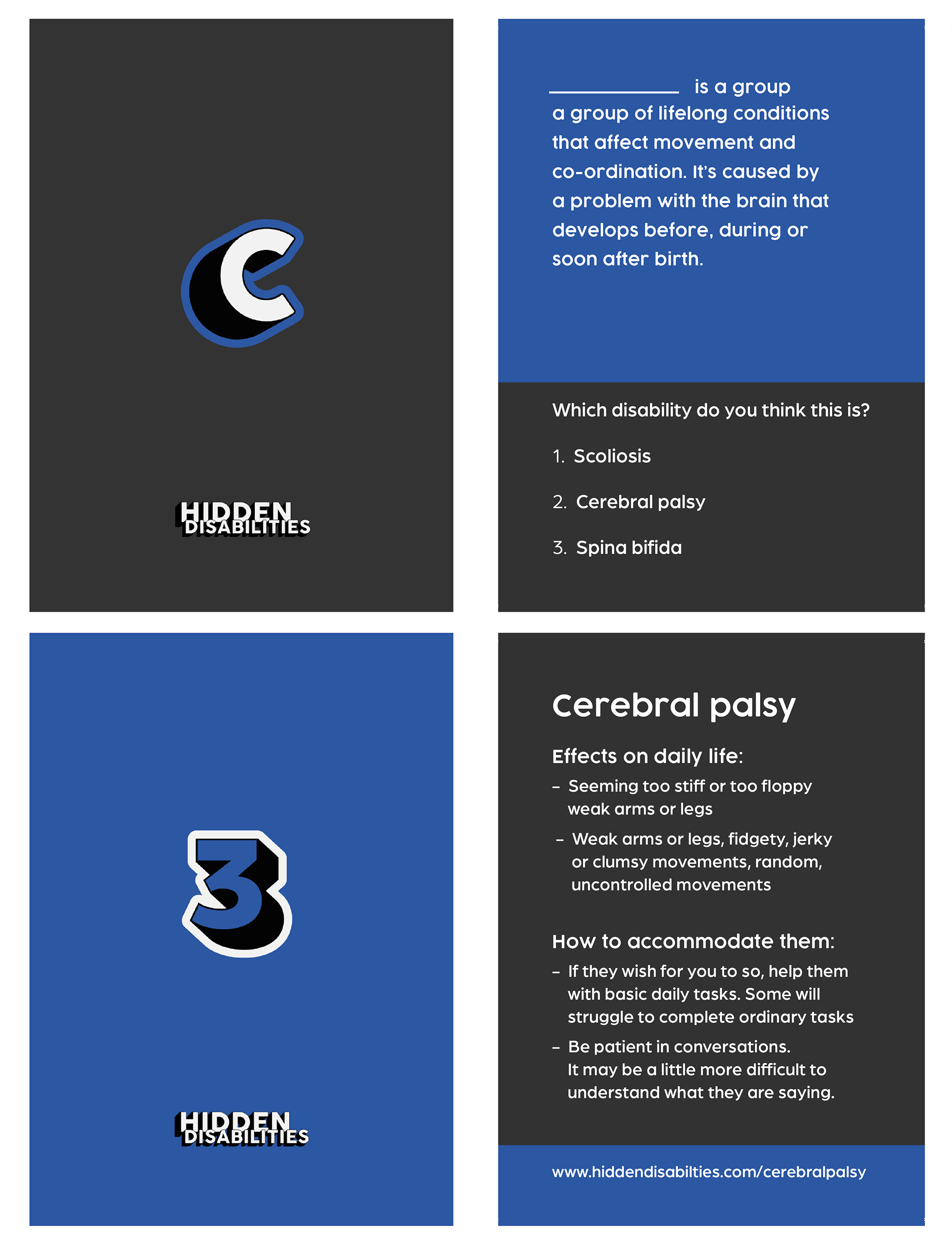
Alongside the link on each of the cards providing a useful resource to discuss and share online, students are encouraged to educate others through the worksheet. The worksheet encompasses all of the message through each section of questions and activities. The mascot appears on the back - which has been stylised in a modern, age appropriate way to cater to the audience. The worksheet provided within the kit offers guidance and information on using the cards. It additionally requires students to answer a wide range of questions exploring the complexities and importance of the topic.
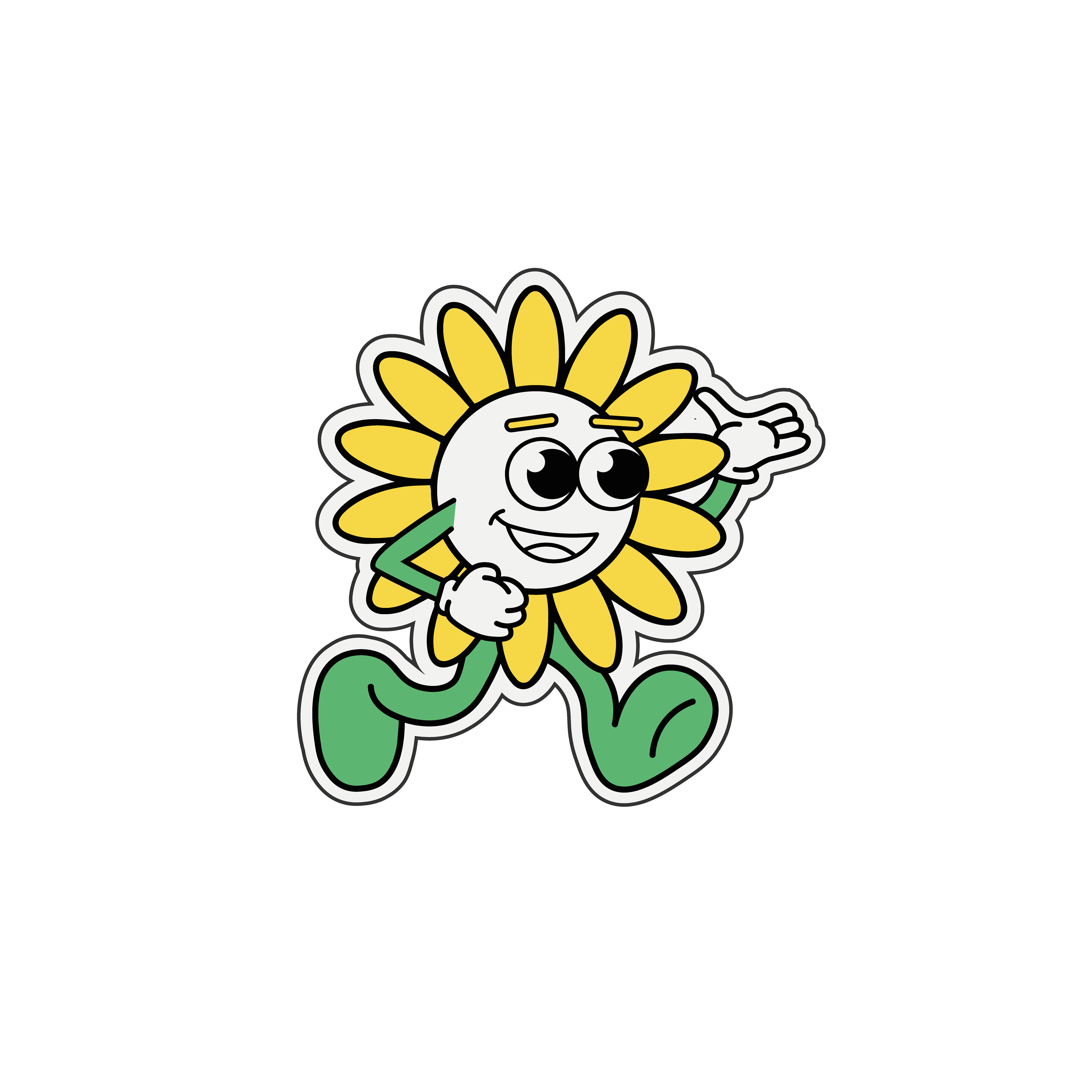
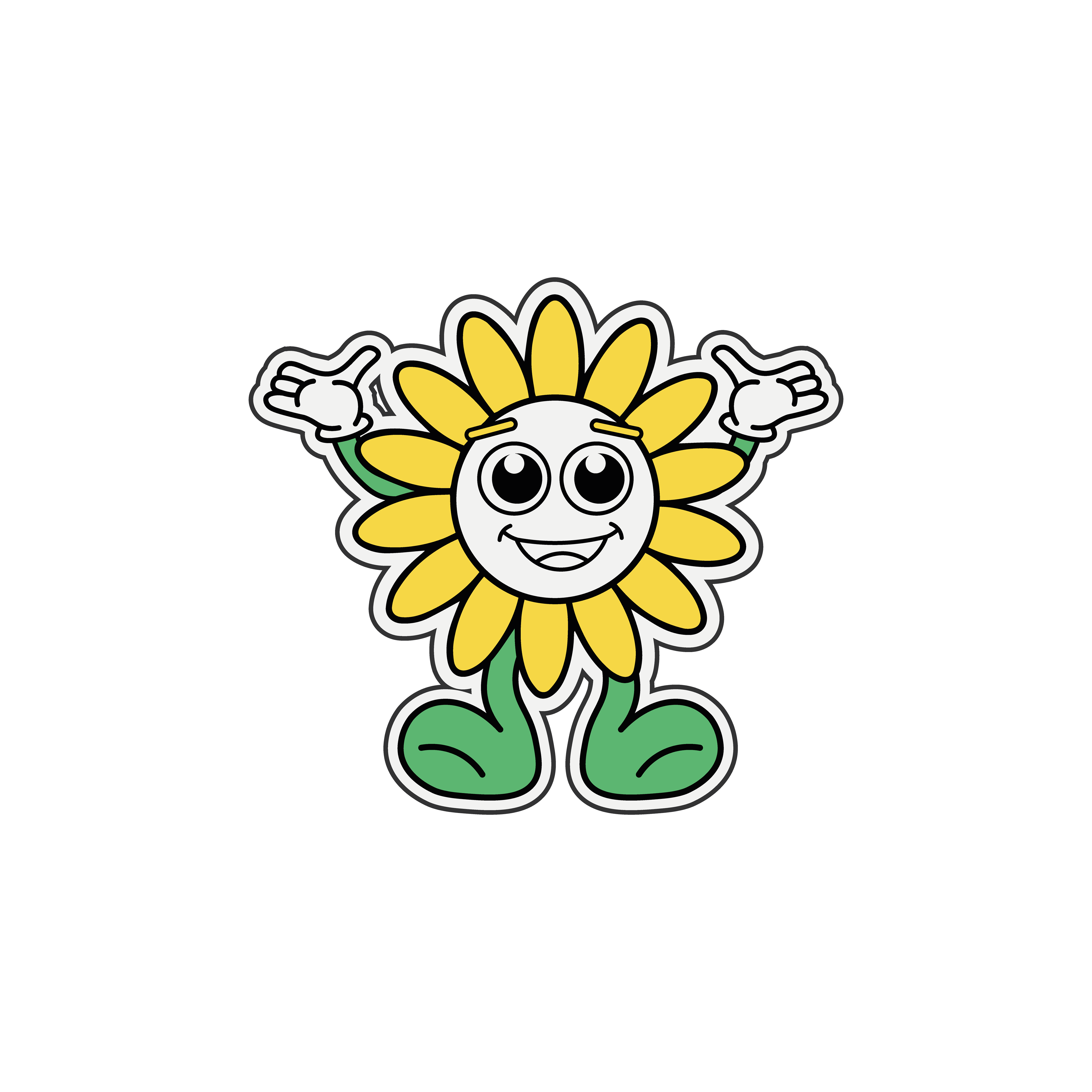
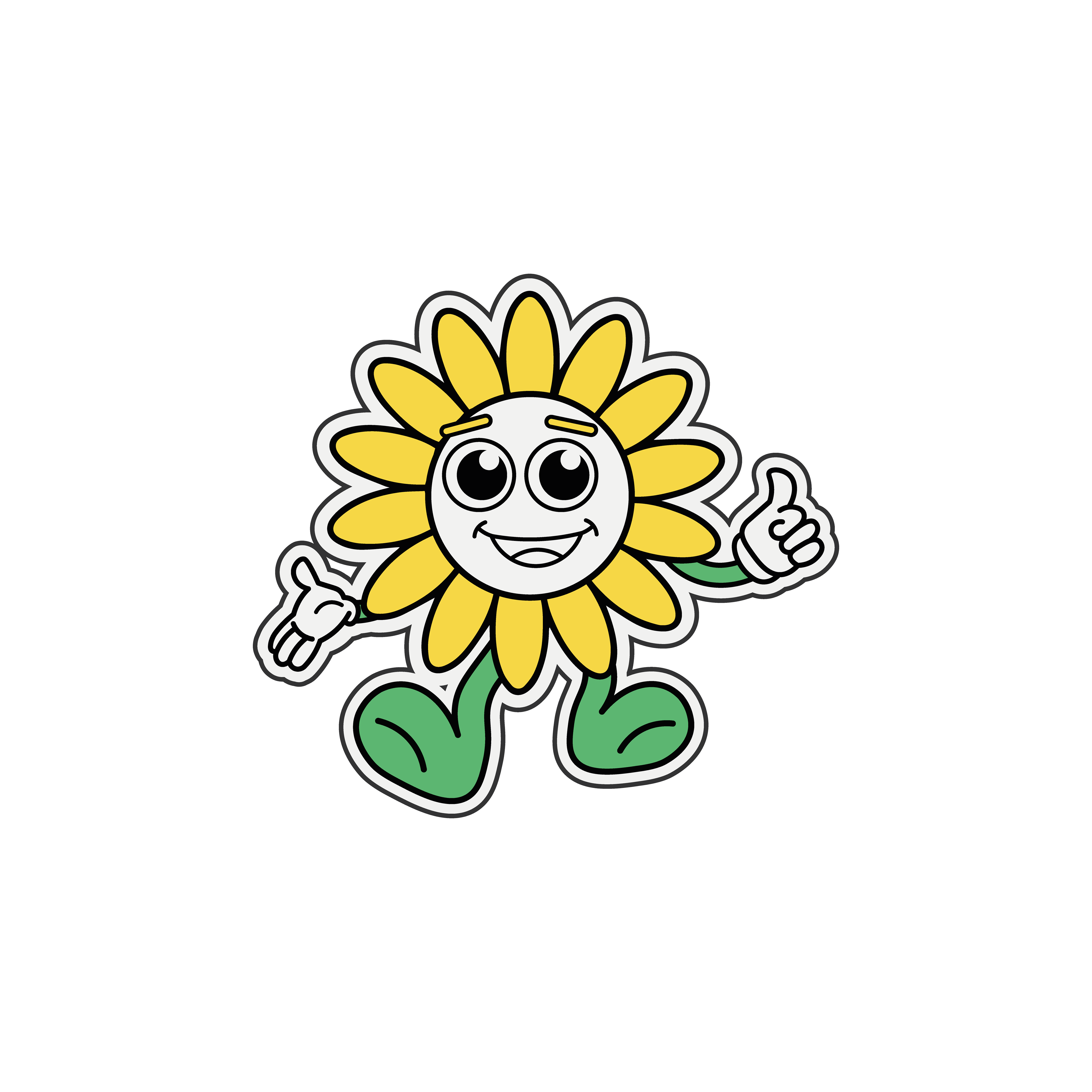
I designed a sunflower mascot as it takes from the sunflower from the stakeholder and re-imagines it into something that is more appealing and fitting for the audience. Although an illustration or character could seem like a juvenile tone, the retro style counteracts it.
Additional mascots were included to expand the branding elements that can be used on packaging as well for marketing and merchandise materials
The campaign is dedicated to creating a safer and more inclusive environment for those living with disabilities, visible or not. I believe it is not up to those with disabilities to disclose their conditions but for the spaces around them to provide an adequate level of accommodation and understanding. I strongly believe the young target demographic will respond to this campaign by adapting their attitudes in the school environment and wider. The main goal is to create a ricochet effect across many people leading to a safe spaces in more environments.
PROJECT DEVELOPMENT Box Development Overview
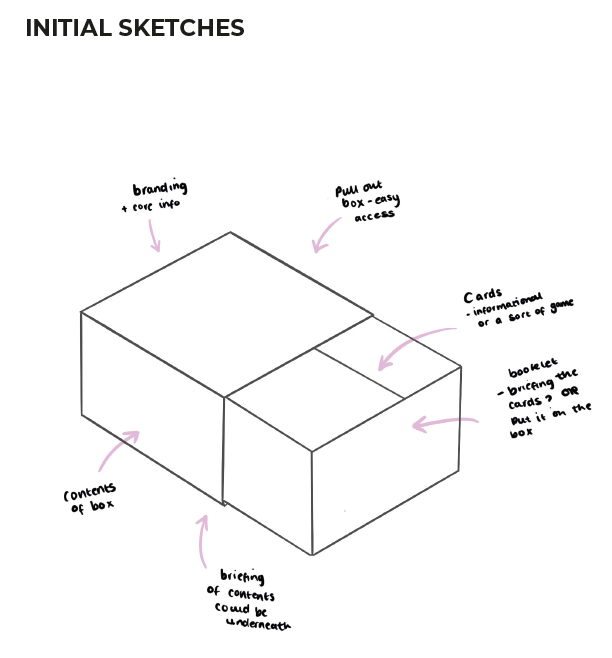
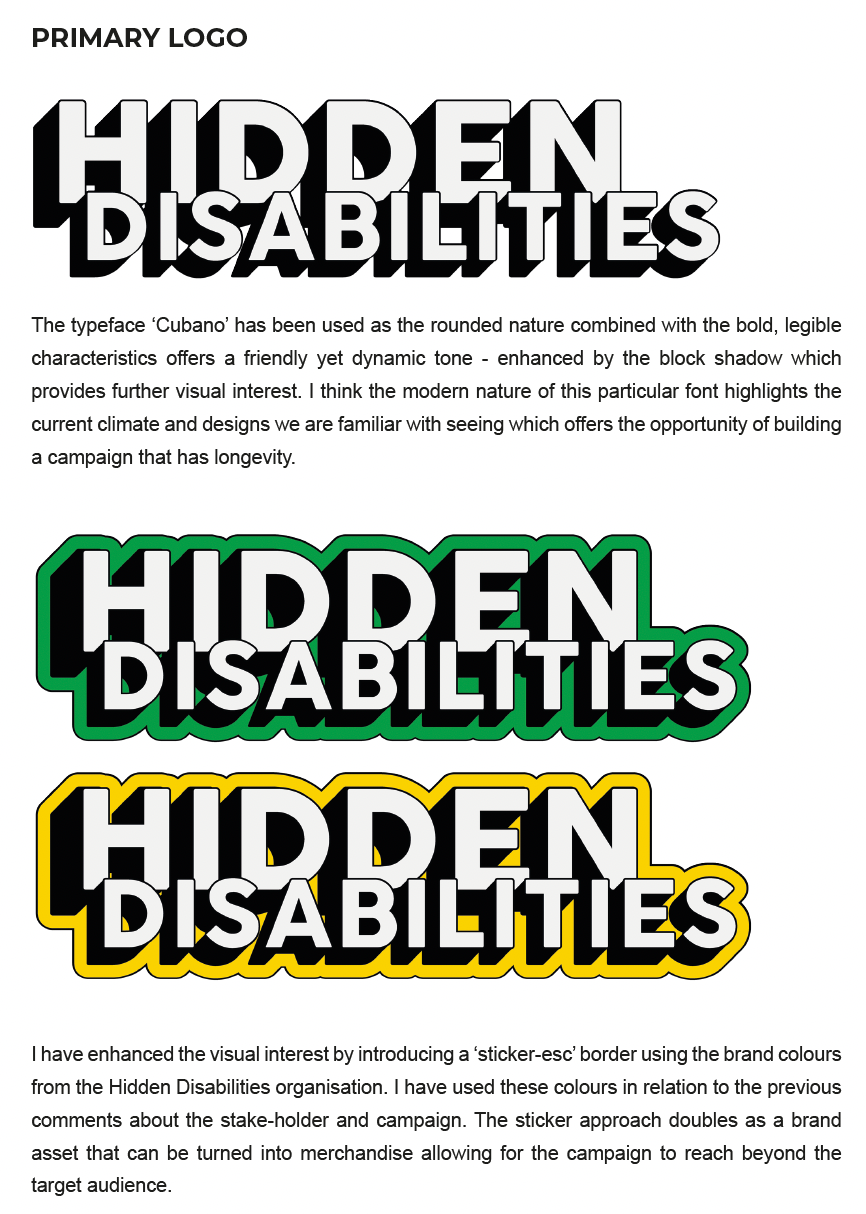
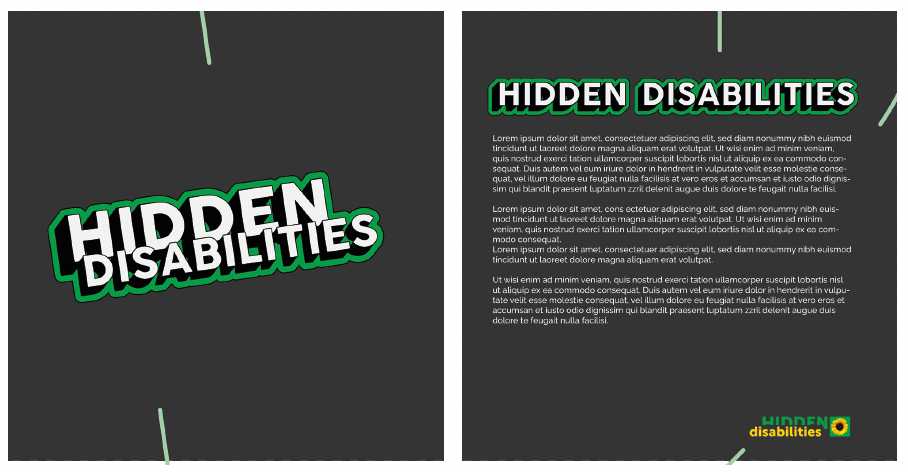
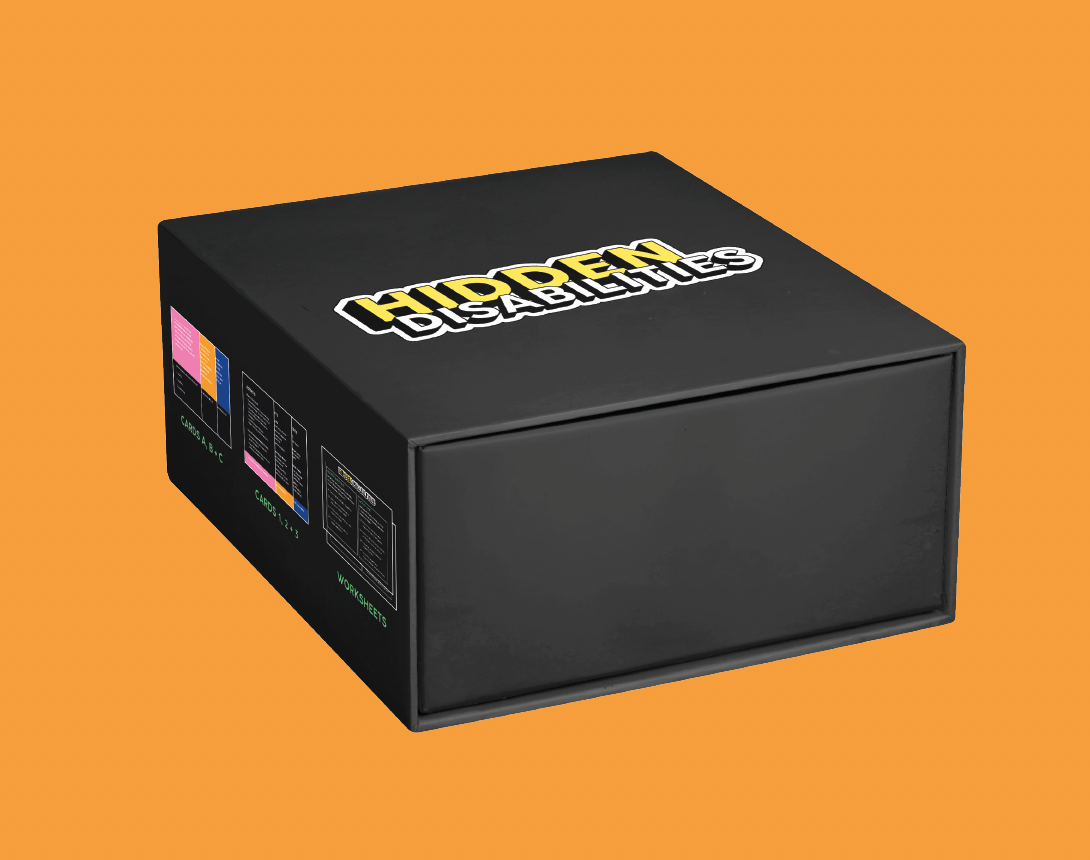
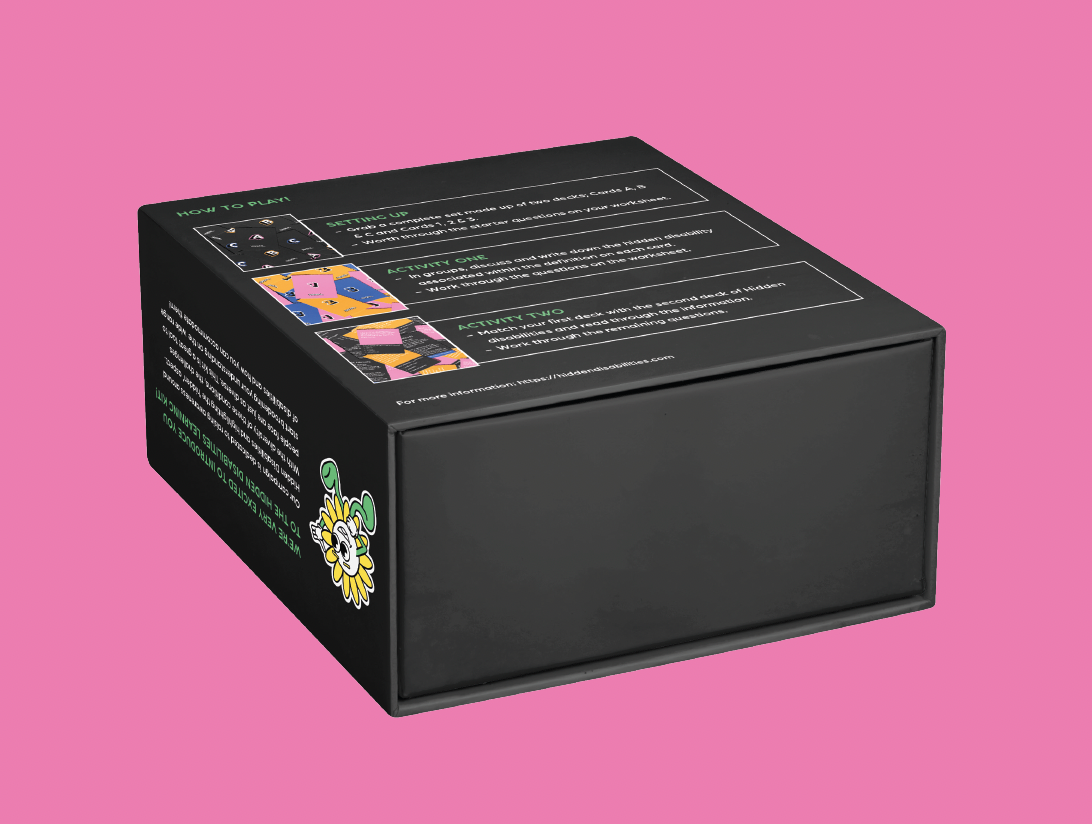
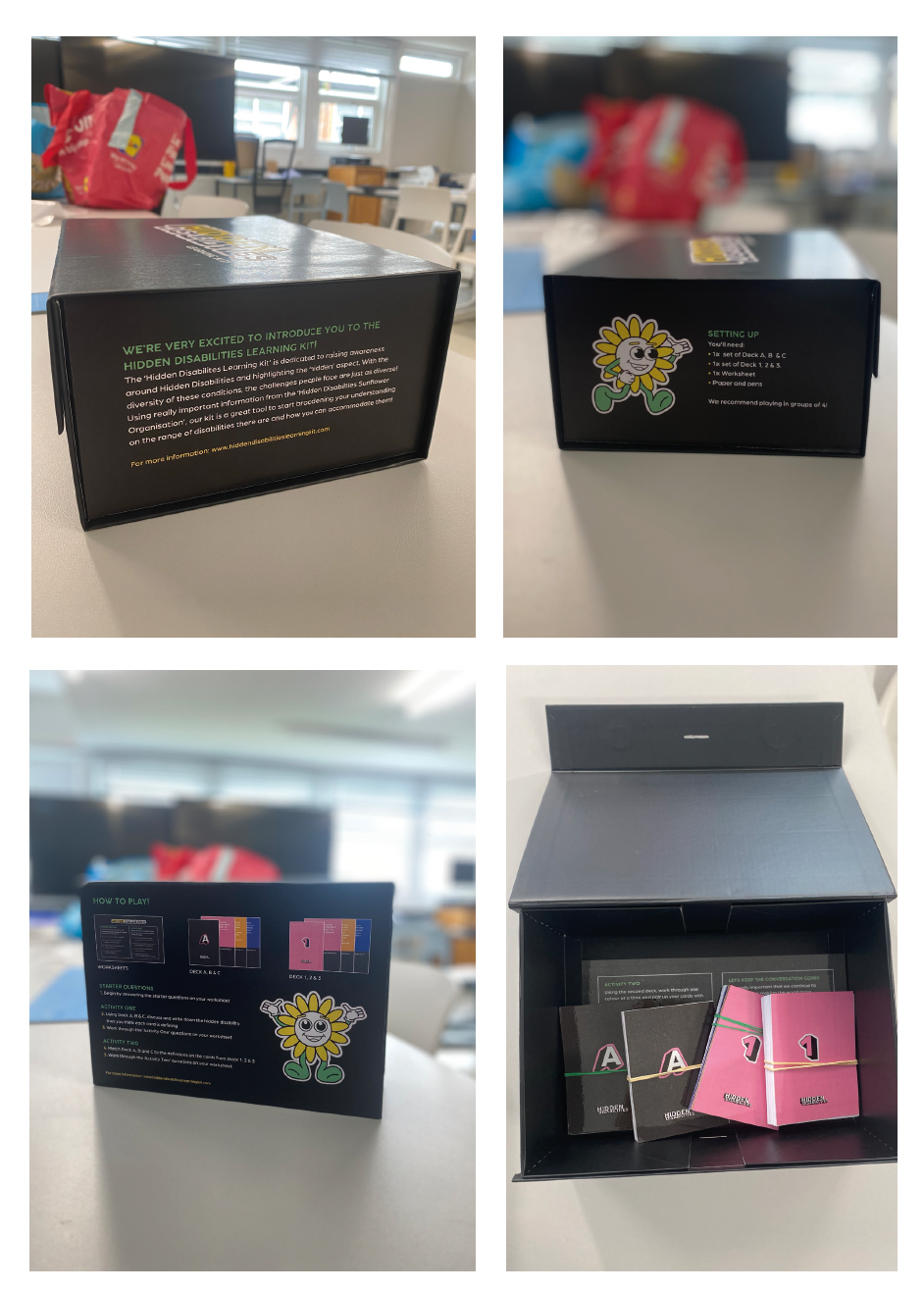
Card Development Overview
